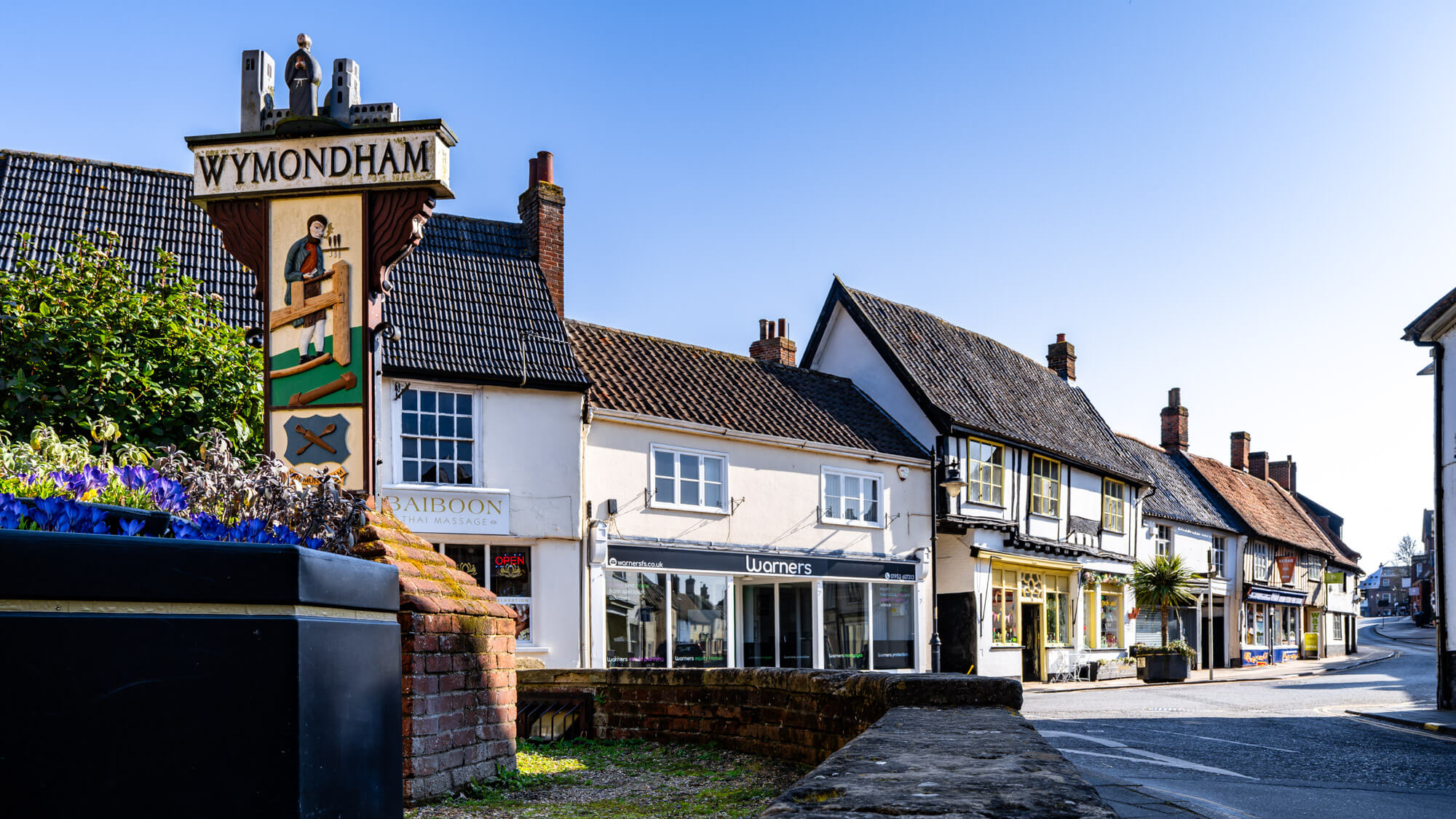Wymondham is full of history, charm, and surprises , so whether you’re a local or just visiting, there’s always something new to discover! Wander through its streets and uncover a mix of historic architecture, delicious food spots, and cultural gems. This guide is your go-to for exploring everything that makes Wymondham so special.
Whether you’re a history enthusiast, a food lover, an adventurer, or someone seeking a tranquil escape, Wymondham offers a diverse range of activities. Join us on a journey through the best things to do in Wymondham and let the town’s unique character capture your heart.
Be sure to sign up for our email newsletter here so that you can find out about fun events around Norfolk.
Note: This post contains affiliate links. As an Amazon Associate, we earn from qualifying purchases. Please see disclosure for more information.
How do you pronounce Wymondham?
Wymondham is one of several places in Norfolk where the pronunciation deviates significantly from its spelling. Through the passage of time, the pronunciation of Wymondham has shortened into “win-dm.”
What is Wymondham famous for?
Wymondham, a historic market town in Norfolk, is best known for its impressive Abbey and iconic Market Cross. Established in 1107, the Abbey stands as a timeless symbol of the town, drawing in visitors from across the globe. Meanwhile, the Market Cross, initially constructed in the 17th century and meticulously restored in the 19th century, has been the vibrant hub of the town’s marketplace for generations.
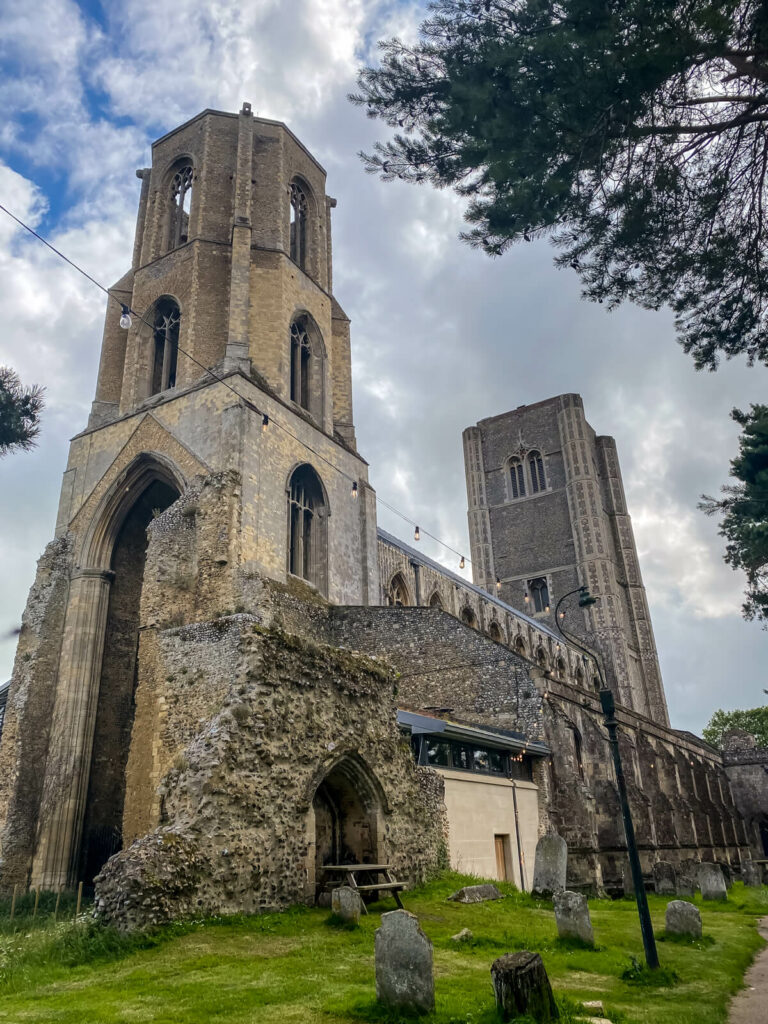
Where is Wymondham?
Wymondham is located approximately 10 miles southwest of Norwich just off the A11.
History of Wymondham
Wymondham’s history stretches from prehistoric times to the present, with evidence of early settlements from the Bronze Age, Iron Age, and Roman periods. The town flourished in the Middle Ages, becoming home to a priory and gaining a market charter.
In 1549, Wymondham played a key role in Kett’s Rebellion, sparked by protests against land enclosures. The uprising began during the town’s annual St. Thomas Becket feast, which had been banned by Henry VIII, and led to a march on Norwich.
Disaster struck in 1615 when arsonists set fire to the town, destroying many timber-framed, thatched houses. The motive remains unclear, though some believe it was linked to anti-Catholic tensions.
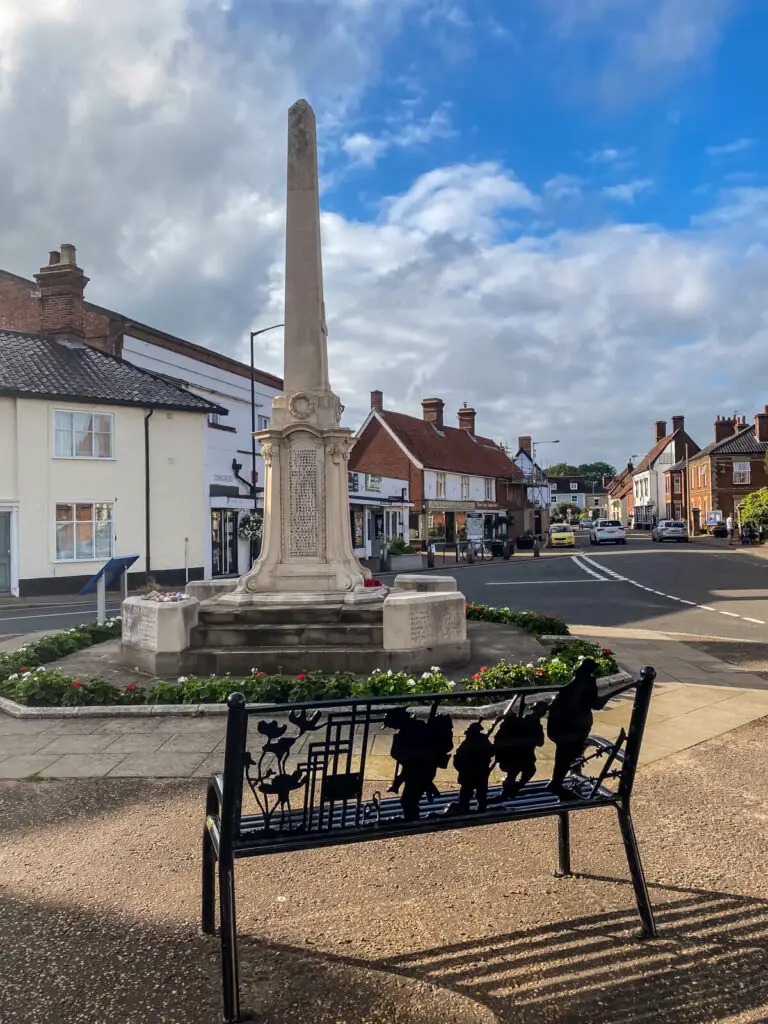
By the late 18th century, Wymondham had a progressive new prison with individual cells. The 19th century brought change as the wool industry declined and the railway arrived. During World War II, a military hospital was built nearby, later becoming Wymondham College. The town’s once-thriving brush factories, employing up to 1,000 people, closed in the 1980s, making way for new housing.
Things to Do in Wymondham
Now, let’s dive into the heart of Wymondham and uncover the wealth of experiences it has to offer. From captivating history to delectable dining, cultural treasures, and scenic beauty, Wymondham’s got it all. Let me share a few things to do in Wymondham.
#1 Visit Wymondham Abbey

Wymondham Abbey stands as the town’s cherished Anglican Parish Church, a place of deep historical and spiritual significance dedicated to St Mary and St Thomas of Canterbury. With a rich history spanning over nine centuries, it has been a steadfast center of Christian worship and a testament to Wymondham’s illustrious past. Today, it remains not only a place of prayer but also a cherished site of pilgrimage.
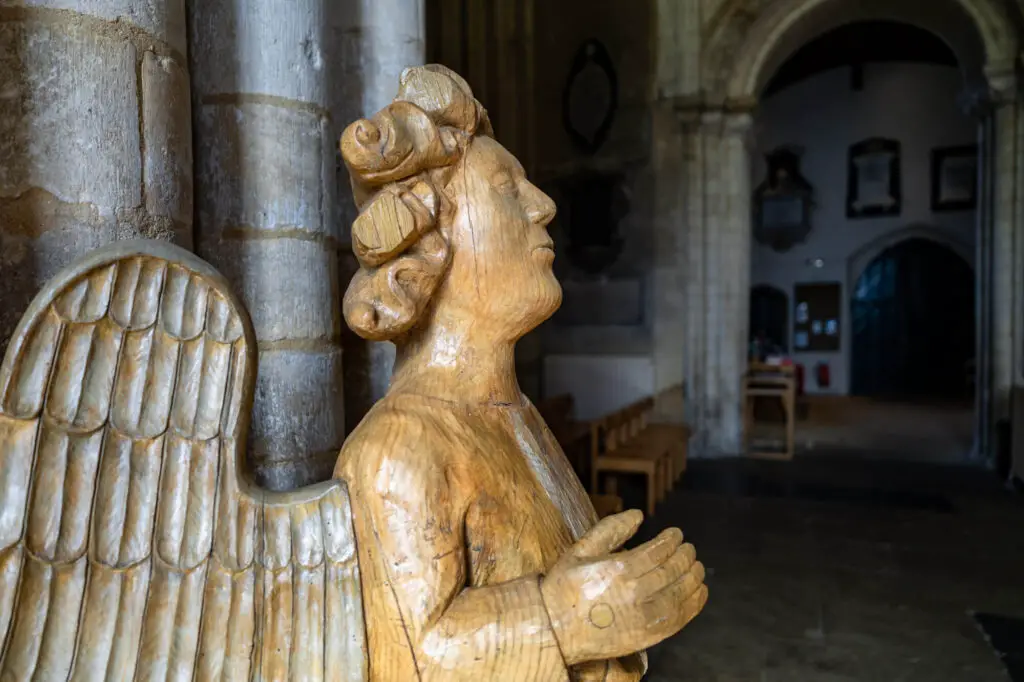
Established in the 12th century, the twin towers of Wymondham Abbey are iconic, visible for miles around and serving as enduring symbols of the town. Initially, Wymondham Priory accommodated a modest twelve Benedictine monks but gradually expanded in both influence and prosperity over the centuries. It was a unique shared space, welcoming both monks and parishioners.
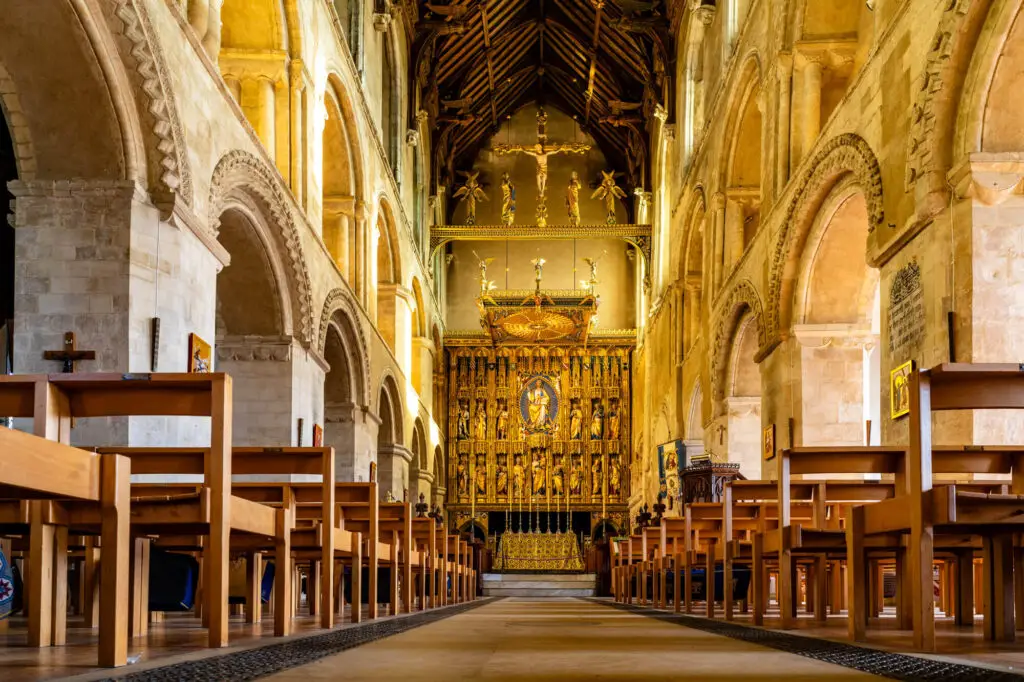
The aftermath of the Dissolution marked a transformative era for the priory. The monastic buildings were gradually dismantled, with their stones repurposed. The eastern end of the church, separated from the nave by a solid wall since around 1385, was demolished, resulting in the church’s present length, which is approximately half of its original size. In 1573, Queen Elizabeth I’s visit left a lasting mark on the church, with her date and initials still visible on the exterior stonework.
Wymondham Abbey boasts several notable architectural features, including the Norman nave, a resplendent 15th-century angel roof adorning the nave, and an exquisite north aisle roof.

Discover more about visiting Wymondham Abbey, where admission is free, by clicking here. Alternatively, take a virtual tour by visiting this link.
#2 Go to the Wymondham Heritage Museum
The Wymondham Heritage Museum offers a journey into the rich history of Wymondham and Norfolk, with a diverse collection of exhibits and displays. The museum is housed in The Bridewell, a nationally significant structure that redefined the concept of incarceration during its time.
Visitors can explore the very rooms that once housed prisoners, served as courtrooms, and functioned as police stations. The museum even allows guests to venture into the dungeons beneath the cells, offering a glimpse into the history of confinement and punishment.
The museum is typically open late-March to late-October and there is a small admission fee. Their permanent collection covers various aspects of the region’s heritage, including agriculture, the charming Old Wymondham storefronts, the tale of Robert Kett, the historical significance of the Wymondham Bridewell, and the art of brushmaking in Wymondham.
Find out more here.
#3 See the Wymondham Market Cross

Wymondham’s iconic Market Cross is an unmissable landmark in the town centre. Erected in 1617-1618 to replace its predecessor, which fell victim to destruction in 1615, this timber-framed structure is now home to the Tourist Information Centre..
It’s an octagonal building, uniquely supported over an open ground floor by eight timber buttress-like posts and a central post. The upper floor features subtle carved decorations and can be accessed via an exterior stair at the back.
#4 Meet the Wymondham Alpacas
In the tranquil Wymondham countryside, a group of friendly alpacas has found their new home. You can join these lovable creatures and their owner, Tom, for an experience of a lifetime.
Get up close and personal to discover the endearing personalities of these alpacas and gain insights into their care. Then, let these gentle creatures set the pace as you enjoy a relaxing walk in their company. Along the way, you’ll be an active participant during feeding time, and there’s no limit to the questions you can ask!
Find out more here.
#5 Ride the Mid-Norfolk Railway
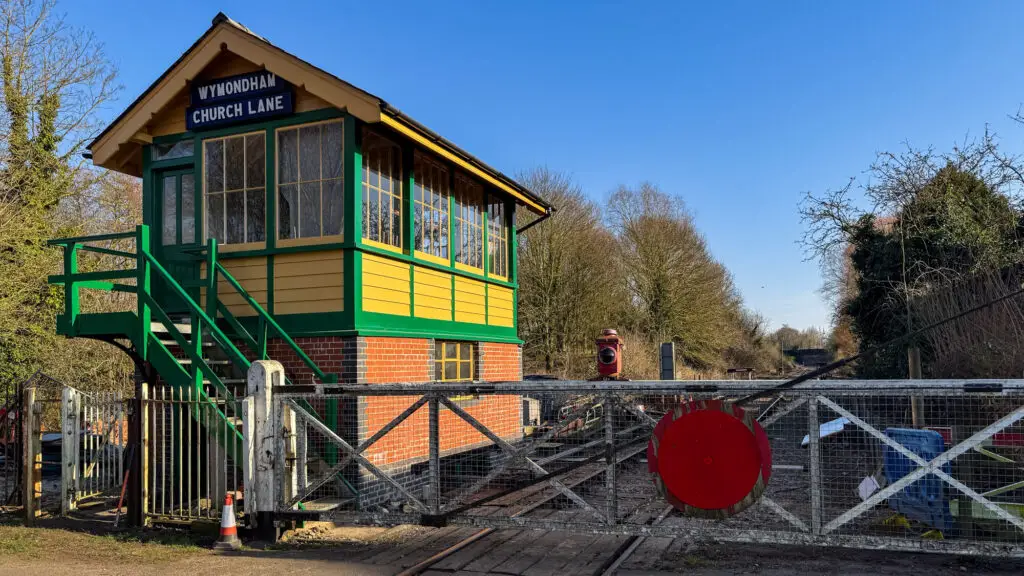
From Wymondham, you can ride the region’s longest standard-gauge heritage railway to Dereham. From the Wymondham Abbey Halt station, you can board a diesel or steam train and enjoy a trip back in time to the 1950s and 1960s.
The railway also hosts special events, including the popular Polar Express service during the Christmas season and afternoon tea on select days. It’s a unique attraction for railway enthusiasts and history buffs.
Get more information here.
#6 Check out Wymondham Arts Centre
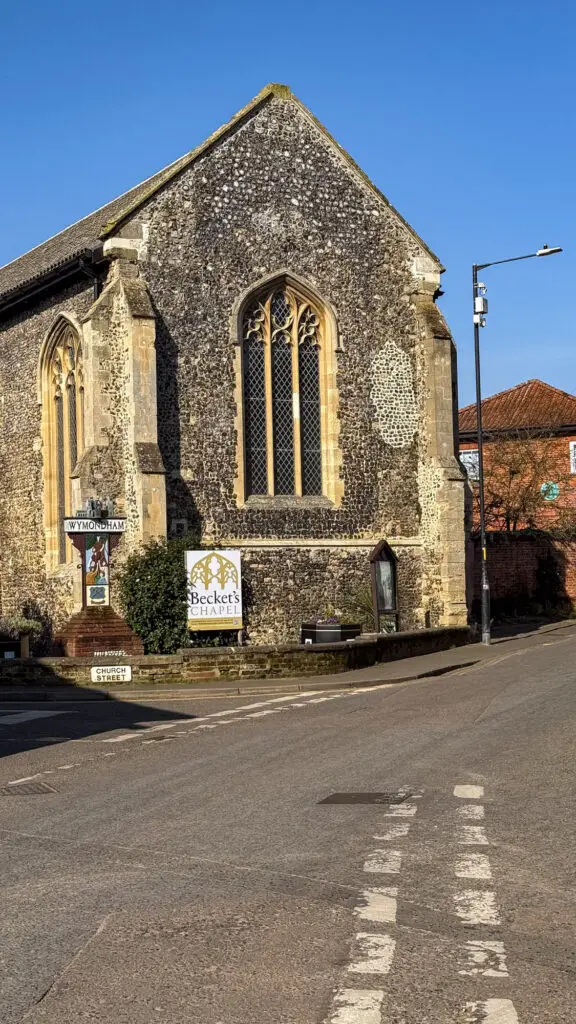
A visit to the Wymondham Arts Centre, housed within Becket’s Chapel, promises an ever-changing experience for art enthusiasts. This former place of worship has been beautifully transformed into an exhibition and events space.
One of the unique aspects of the Wymondham Arts Centre is its commitment to showcasing local artistic talent. Frequently, you’ll find the works of talented local artists featured, with many being available for sale. This provides an excellent opportunity to not only admire but also to acquire pieces of art that resonate with you.
The exhibitions within the centre change regularly, and there are often workshops to provide a hands-on experience. When workshops are not in session, the Wymondham Arts Centre has a dedicated children’s drawing area.
Find out more here.
#7 Visit a Pub
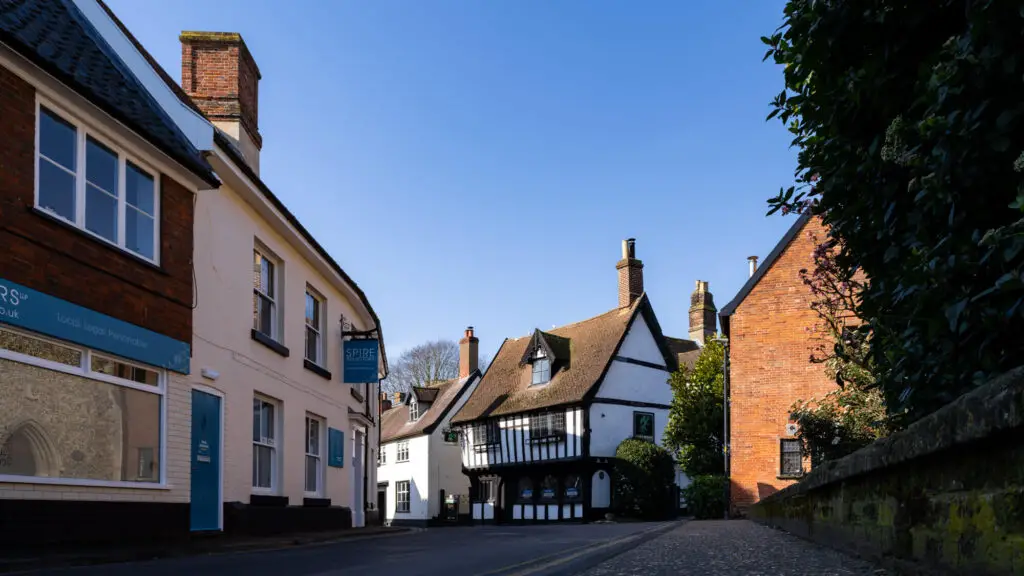
Visiting a pub in the heart of Wymondham is a fun way to experience the town’s charm and hospitality. Here are some of the best options in the town centre:
The White Hart: This establishment dates back to 1526. They offer food daily, including a Sunday Carvery, and their bar boasts a wide variety of drinks. Don’t miss the chance to relax in their sunny beer garden.
The Green Dragon: The Green Dragon is a beautiful 14th-century pub with great beers, food, and friendly staff. If the weather is nice be sure to check out their garden.
Queens Head: The Queen’s Head is a charming 17th-century timber-framed inn. Whether you’re there to sample their fine ales, enjoy a meal in the restaurant, or unwind in the bar area, everyone is welcome including well-behaved children and dogs.
#8 Go Antiquing
Wymondham has two great spots for antique lovers. The Wymondham Antiques Centre is packed with antique, bespoke, and refurbished furniture, along with a mix of vintage and collectible treasures. Just down the road, the Wymondham Furniture Warehouse offers a constantly changing selection of antiques, retro pieces, and architectural salvage.
#9 See Kett’s Oak
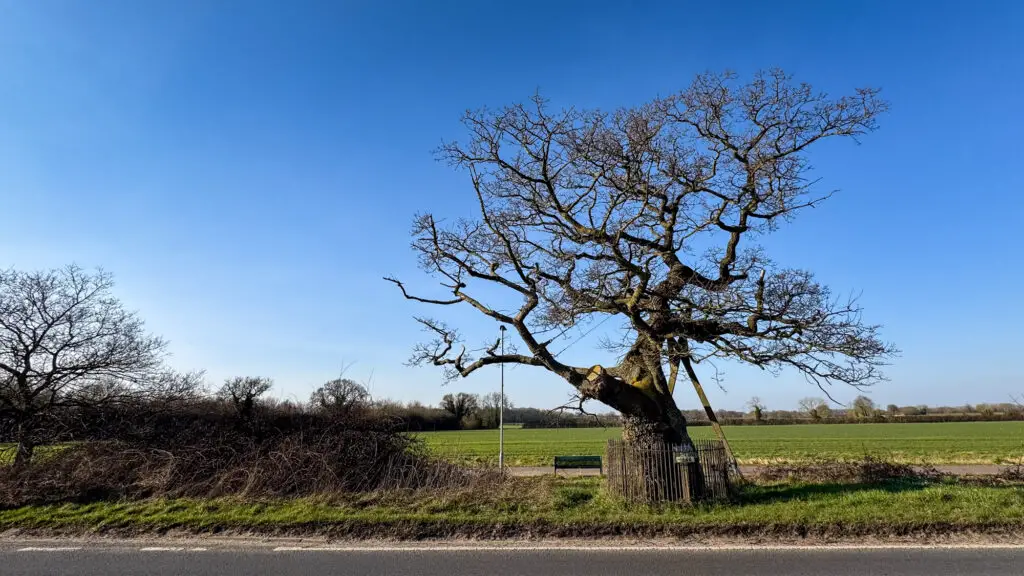
Located alongside the B1172 road between Wymondham and Hethersett, stands an ancient and historically significant oak tree, known as Kett’s Oak (Quercus robur). This venerable oak was the very spot where, in 1549, Robert Kett and his brother William addressed a gathering of men during the infamous Kett’s Rebellion.
Their grievances were fuelled by concerns over the enclosure of common lands and the soaring cost of living. Unfortunately, the rebellion was unsuccessful and several of the rebels, including Robert and William Kett, were hung to death. Remarkably, nine of the rebels met their fate here at this tree.
Kett’s Oak’s age and historical importance are evident in its condition. A split in the trunk has been filled with cement, and iron bands are used to support and protect the tree. Recognising the need to preserve this symbol of historical resistance and resilience, in August 2020, Norfolk County Council took steps to improve the oak’s health by applying biochar to its roots.
*If you want to visit another important location from Kett’s Rebellion, check out Kett’s Heights in Norwich.
#10 Visit the Farmers Market (Third Saturday of Each Month)
The farmers’ market in Wymondham is a beloved local tradition that has been taking place for over 20 years on the third Saturday of each month. Wandering through the market stalls, you’ll notice that they feature items grown or produced nearby, so while you may not find bananas here, you will discover plenty of homegrown and homemade treasures.
It’s an opportunity to connect with local farmers and to know where your food comes from. You will want to arrive early to get the best picks of fresh meat, vegetables, and bread.
How to Get to Wymondham
Wymondham is conveniently located just a short drive away from Norwich via the A11. Alternatively, you can opt for the train (for pricing and schedules, please check here) or the bus for an equally convenient journey (get the details here).
Where to Stay In Wymondham
You may not find any hotels in Wymondham but that doesn’t mean it isn’t a fabulous place to base yourself when you visit Norfolk. Wait until you see how lovely some of the self-catering holiday cottages are in Wymondham.
Check out the options here.
Is Wymondham Worth Visiting?
Absolutely, Wymondham is worth visiting! This historic Norfolk town offers a delightful blend of rich heritage and modern charm. Explore its ancient streets and discover historic landmarks like Wymondham Abbey and the Market Cross. Try the local restaurants and visit the pubs or hunt for treasures in its antique shops. Whether you’re a history enthusiast, a foodie, or simply seeking a peaceful escape, Wymondham has something to offer. It’s a hidden gem in Norfolk that’s well worth a visit.
Disclosure: This post contains affiliate links. This means we will receive a small commission for some purchases made using links in our blog with no additional cost to you. Please be assured we would not promote any product unless we believe that our readers will also benefit. The commission does not influence the editorial content of this site.

